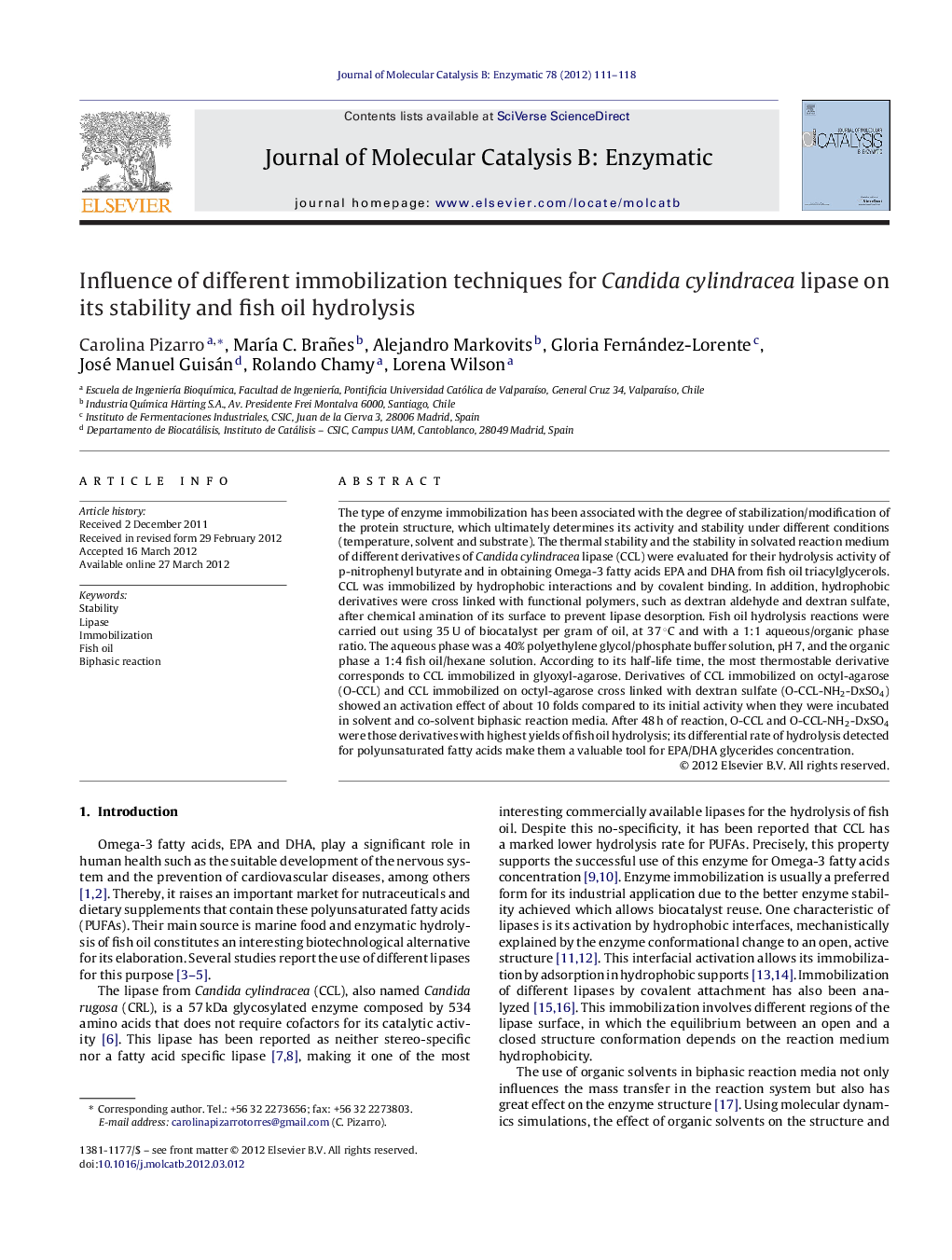| کد مقاله | کد نشریه | سال انتشار | مقاله انگلیسی | نسخه تمام متن |
|---|---|---|---|---|
| 70070 | 48808 | 2012 | 8 صفحه PDF | دانلود رایگان |

The type of enzyme immobilization has been associated with the degree of stabilization/modification of the protein structure, which ultimately determines its activity and stability under different conditions (temperature, solvent and substrate). The thermal stability and the stability in solvated reaction medium of different derivatives of Candida cylindracea lipase (CCL) were evaluated for their hydrolysis activity of p-nitrophenyl butyrate and in obtaining Omega-3 fatty acids EPA and DHA from fish oil triacylglycerols. CCL was immobilized by hydrophobic interactions and by covalent binding. In addition, hydrophobic derivatives were cross linked with functional polymers, such as dextran aldehyde and dextran sulfate, after chemical amination of its surface to prevent lipase desorption. Fish oil hydrolysis reactions were carried out using 35 U of biocatalyst per gram of oil, at 37 °C and with a 1:1 aqueous/organic phase ratio. The aqueous phase was a 40% polyethylene glycol/phosphate buffer solution, pH 7, and the organic phase a 1:4 fish oil/hexane solution. According to its half-life time, the most thermostable derivative corresponds to CCL immobilized in glyoxyl-agarose. Derivatives of CCL immobilized on octyl-agarose (O-CCL) and CCL immobilized on octyl-agarose cross linked with dextran sulfate (O-CCL-NH2-DxSO4) showed an activation effect of about 10 folds compared to its initial activity when they were incubated in solvent and co-solvent biphasic reaction media. After 48 h of reaction, O-CCL and O-CCL-NH2-DxSO4 were those derivatives with highest yields of fish oil hydrolysis; its differential rate of hydrolysis detected for polyunsaturated fatty acids make them a valuable tool for EPA/DHA glycerides concentration.
Figure optionsDownload as PowerPoint slideHighlights
► Enzyme immobilization associated with rigidization and stabilization.
► Thermal stability and stability in solvated medium for lipase derivatives.
► Immobilization modulates the hydrolysis of fish oil for the production of Omega-3.
► Improvement in thermal stability do not necessarily improve the hydrolysis activity.
► Covering derivatives with functional polymers effectively increases its stability.
Journal: Journal of Molecular Catalysis B: Enzymatic - Volume 78, June 2012, Pages 111–118